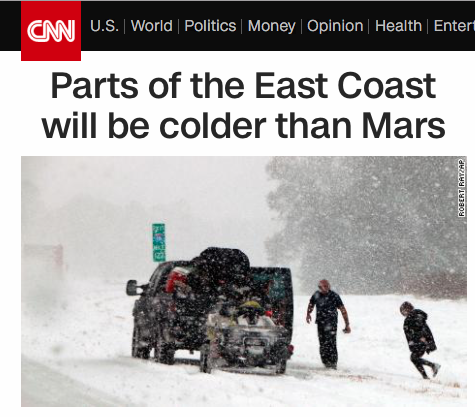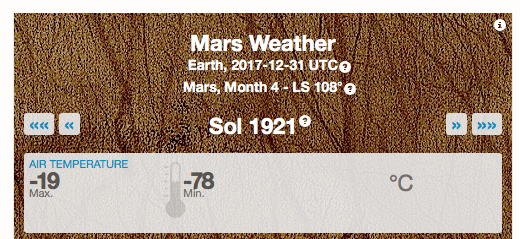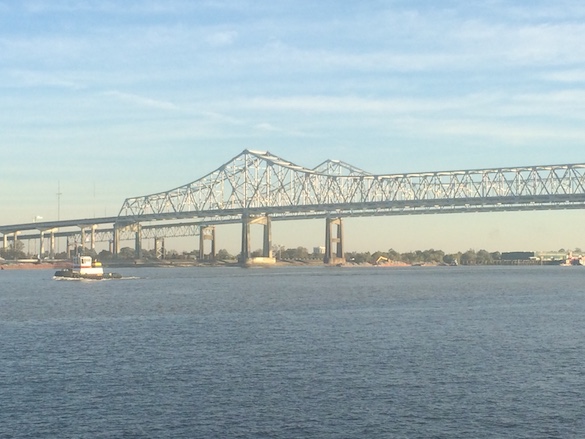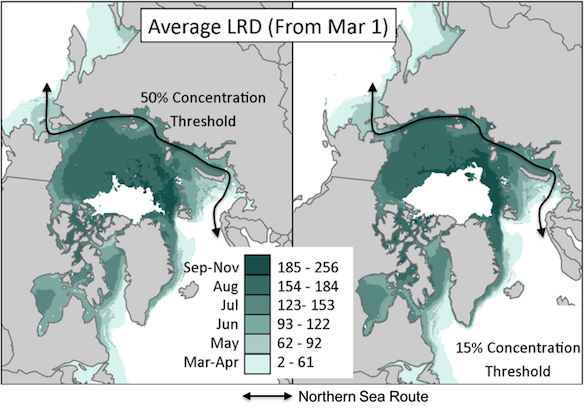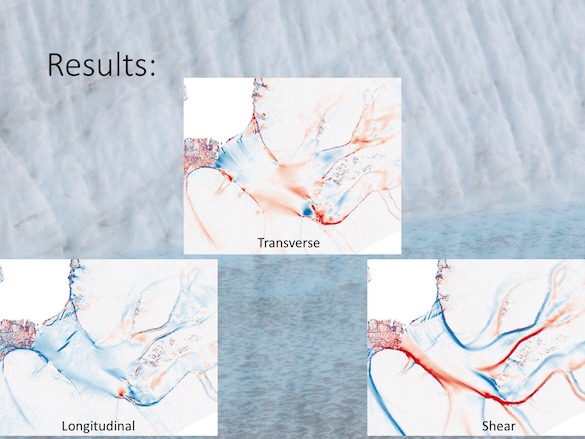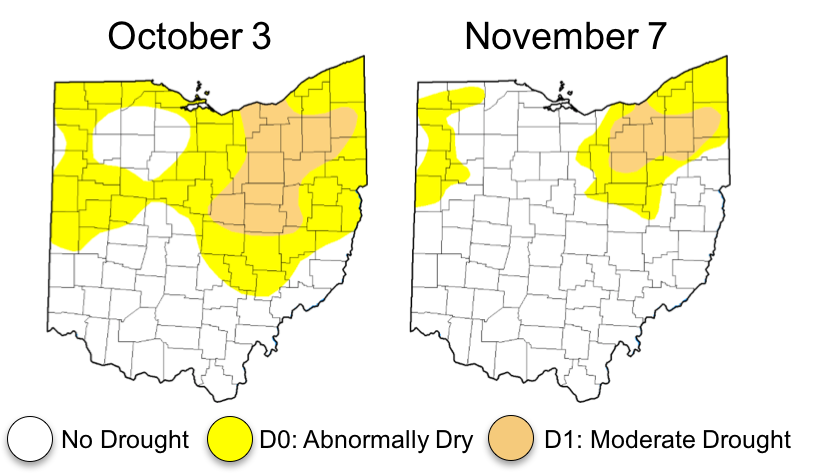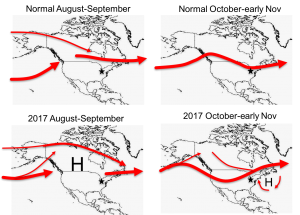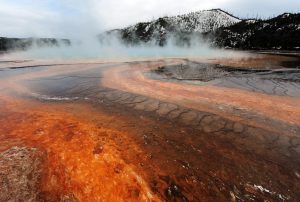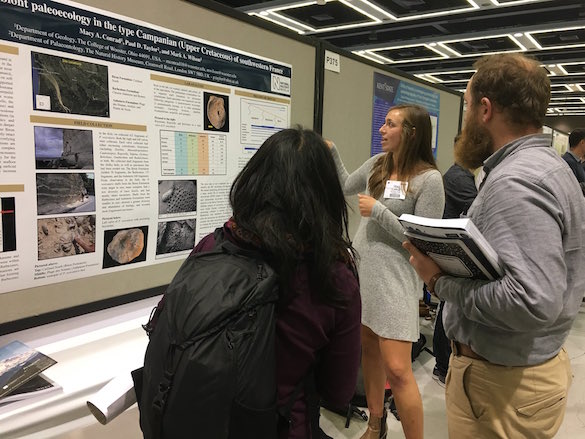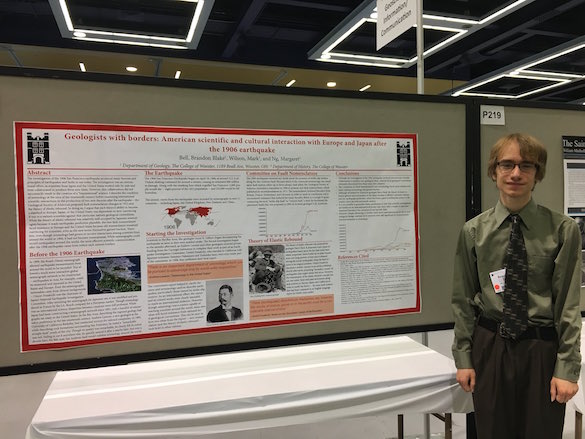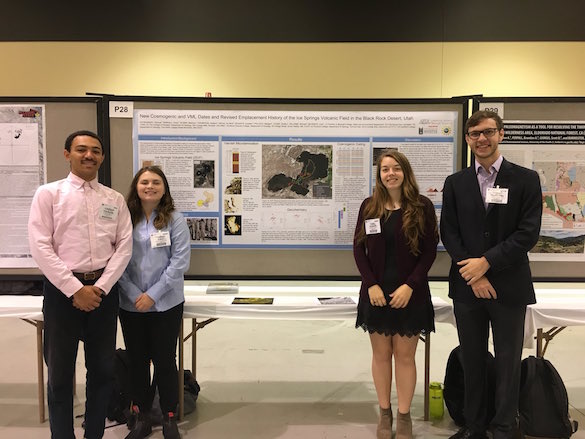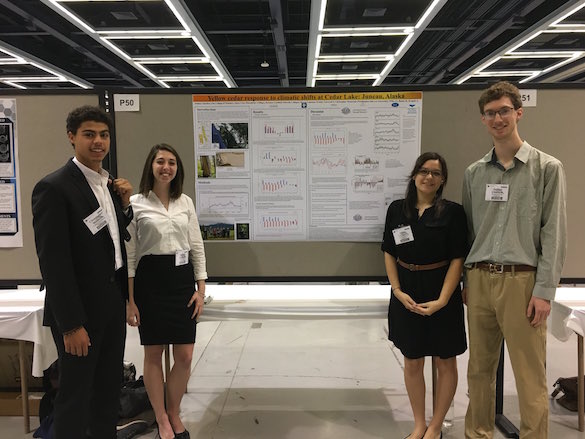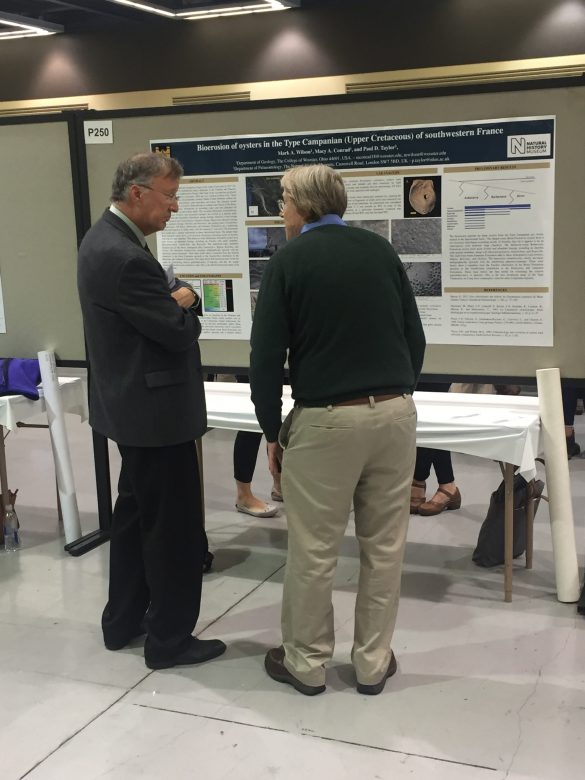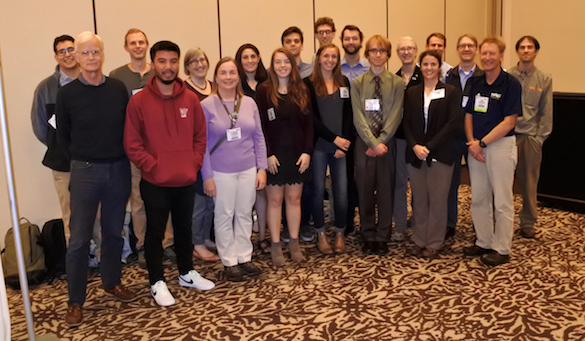While Dr. Wilson is on leave and taking a hiatus from his acclaimed “Fossil of the Week” series, the Department of Geology decided to fill the void with something completely different: Climate Monday. For 15 weeks in the Spring 2018 semester, I am going to highlight one animation, graphic, or online tool that helps visualize some aspect of the climate system. Some are about weather, some about climate. Most are about the atmosphere, but the ocean comes into play as well.
I want to start with a bang, so first up is my favorite weather animation: Cameron Beccario’s “Earth”. A screenshot below is from just after New Years’, when a nor’easter was blasting the northeast USA and cold Arctic air was surging southward over the Midwest. (Wooster, OH is in the middle of the little green circle.) This is a beautiful image on its own. The swirling convergence of wind around the nor’easter turns red to indicate the high wind speeds. The easterly Trade Winds blowing off Africa are clearly defined. Two additional winter storms can be seen by the clustered wind streamers and red coloring in the North Atlantic and North Pacific Oceans, although neither is as tight and powerful as the East Coast blizzard.
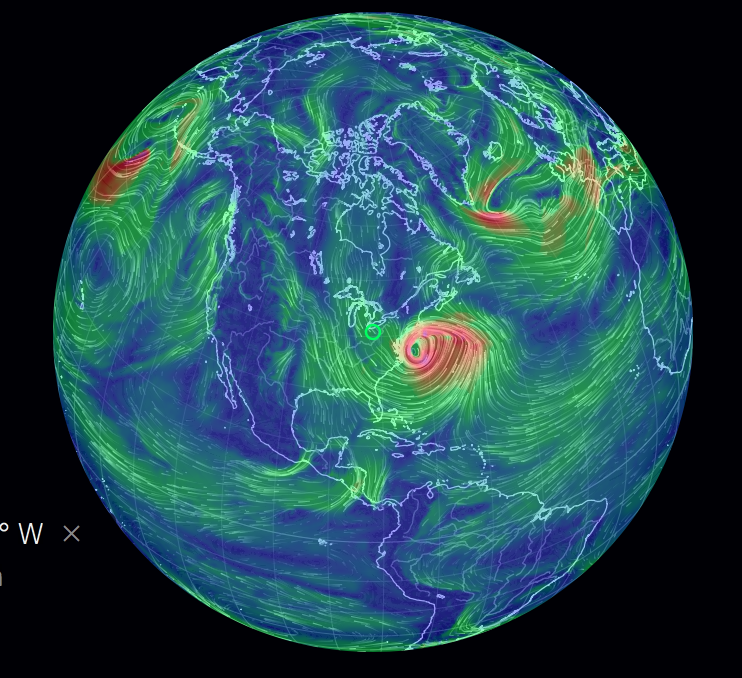
Screenshot of wind animation for 5 January 2018, from Cameron Beccario’s weather animation tool. Redder colors indicate stronger wind and the streamers indicate wind direction.
But that’s just a glimpse at what this tool can do. Besides staring at colorful wind patterns and watching cyclones churn, users can pan around the entire Earth, zoom in and out, change the color variable to temperature, humidity, or cloud density, even aerosols or ocean currents. You can toy around with different projections, examine different levels of the atmosphere, and even go back in time.
The data behind these animations are from a variety of sources. Cameron Beccario has integrated the National Oceanic and Atmospheric Administration’s (NOAA) Global Forecasting System (GFS), version 5 of NASA’s Goddard Earth Observing System (GEOS-5), various other datasets from the US and EU agencies, as well as a few non-profits. Underlying most of these monitoring systems are a combination satellites, surface observations, and atmospheric models. These are the same tools used for weather prediction and analysis, so although it’s not a research tool, Beccario’s animations have high-qaulity data behind them, and they’re the best animations of atmospheric and oceanic data I’ve seen.
For a little more fun, here’s a glimpse at the aerosols. More specifically, this is the dust concentration from the same day: 5 January 2018. I focused this on the widespread dust coming off the Sahara Desert. Some of those dust particles can end up as far away as Florida and Texas.
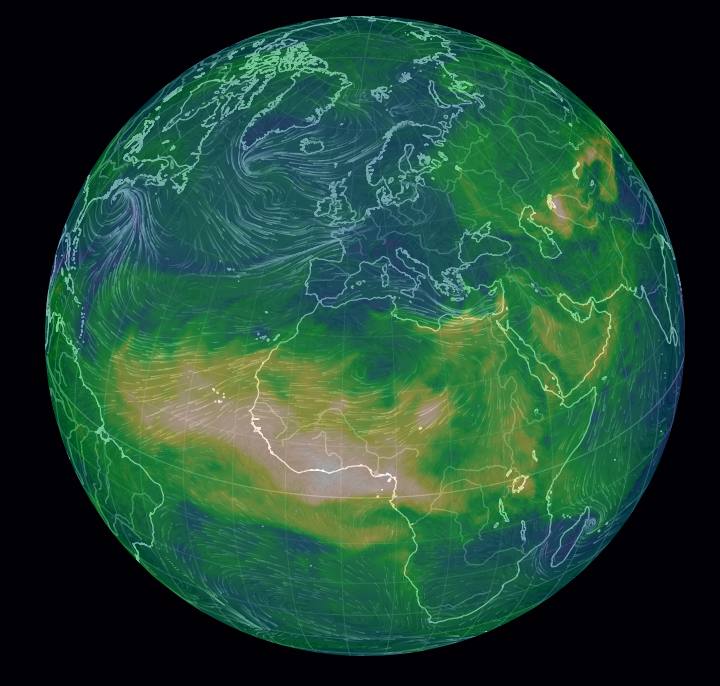
Screenshot of dust concentration on 5 January 2018 from Cameron Beccario’s weather animation tool. The tanner the color, the more dust.
Sometimes zooming in on a feature can be fun. Here’s an example of the Gulf Stream, a warm water current along the western boundary of the North Atlantic Ocean that hugs the east coast of the USA from Florida to Cape Hatteras. It’s because of this current that the Atlantic Coast of southern Florida often have warmer water than the Gulf Coast in winter. Beach-goers be aware!
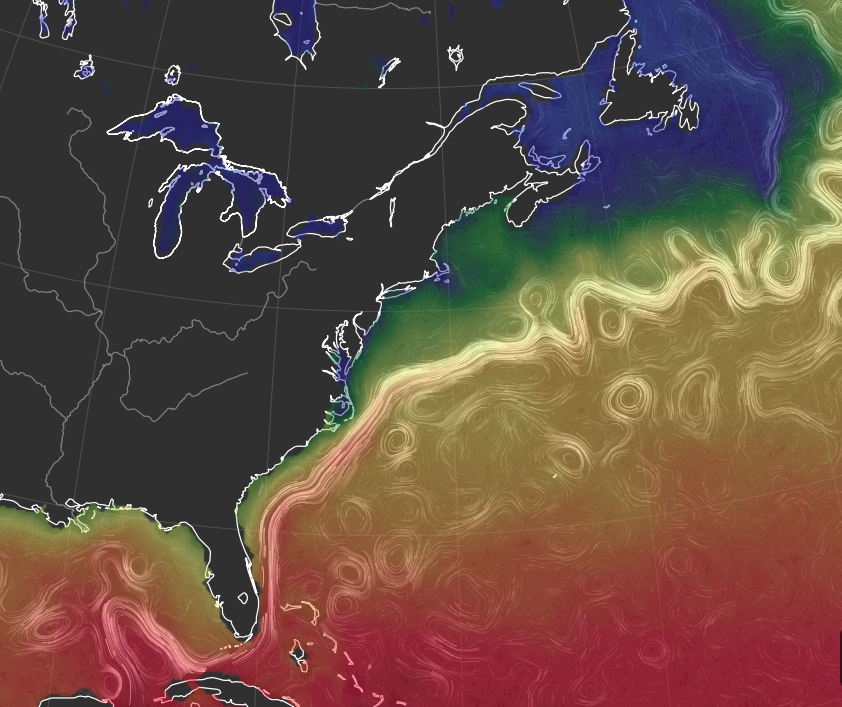
Sea surface temperatures and ocean currents on 5 Jan 2018 from Cameron Beccario’s weather animation tool. Red is hot; blue is near freezing.



